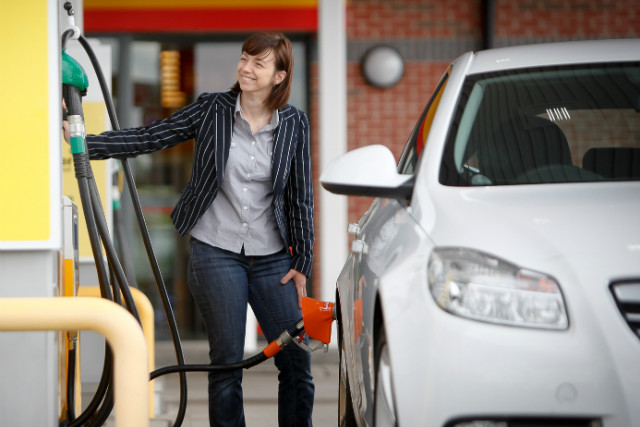Nowadays, MPG figures are like gold dust. With constant changes to emission regulations and efficiency standards, manufacturers are always looking for ways to boost their MPG figures and slap them on billboards to attract customers. But what are these figures all about?
What is MPG?
MPG stands for miles per gallon and indicates how fuel efficient a car is.
In a nutshell, the higher a vehicles MPG figure, the higher the fuel economy and therefore the longer it will travel on a single gallon of petrol – hence the acronym MPG (Miles Per Gallon).
So, for example, take something like a Ford Fiesta 123bhp 1.0-litre EcoBoost petrol – a very popular supermini. This has a 42 litre fuel tank and claims to offer an average of 66mpg. As 42 litres equates to around nine gallons, Ford expects that you will be able to travel 66 miles for every gallon of petrol you put in the fuel tank – effectively meaning that on average you can potentially travel up to 594 miles with a single tank of fuel.
Each new car in Britain has three official fuel consumption ratings: Urban, Extra Urban and Combined.
What is Urban MPG?
Urban MPG measures how efficient a car is when driving in a city or town. The Urban figure will usually be lower than other types of MPG figure, due to the constant fluctuation in driving style – stopping and starting for example.
What is Extra Urban MPG?
Extra Urban MPG is an assessment of how efficient a car is when driven on the roads surrounding cities or towns.
What is Combined MPG?
Combined MPG is the average fuel economy figure a manufacturer comes up with for a car when its figures for urban and extra urban MPG are combined.
When it comes to buying a car, combined MPG is the figure that most will focus on since it represents an average of what you can achieve. Most websites that review cars, including here at Car Keys, will use the combined MPG figure when discussing how efficient a model is.
How can I work out my MPG?
An effective way of calculating your car’s real-life MPG is to first fill up the vehicle’s fuel tank until the fuel pump cuts off. Next, reset the trip meter reading on the dashboard so you can record how many miles you do before the next time you fill up. When this is done, drive normally until you next have to fill up.

Fill up the fuel tank again and make note of how many litres of fuel you put in. When the tank is refilled, make note of the reading on the trip meter before you reset it again. You should be left with two numbers – the number of miles since you previously filled up and the number of litres you have just put in the car’s fuel tank.
Using the following formula, you should be able to calculate your car’s mpg: number of miles divided by the litres of fuel multiplied by 4.54.
As an example, if you drove 300 miles before you fuelled up and you put 30 litres of fuel in your car then the formula works out as 300 ÷ 30 x 4.54 = 45.4mpg. This method should give you an accurate estimate of your car’s fuel economy. Just don’t get carried away with trying to get an exact measurement if you end up with a figure that includes loads of numbers after the decimal point.
How accurate are manufacturers MPG figures?
While all cars undergo the same tests to measure fuel economy, manufacturers have a bit of wiggle room when it comes to their vehicles. During fuel economy tests, manufacturers can remove the likes of roof rails to make the car lighter, and ensure that all supplementary things like lights and air-conditioning are disengaged – resulting in greater efficiency.
The fact that very little continuous motorway-speed driving is included in the tests also have an effect on the validity of the figures.
However, with that said, some cars can achieve their quoted figures and, in some cases, exceed them.
How is MPG tested?
Instead of using an actual road, manufactures will put their cars to the test in a laboratory on a rolling road. Every car will undergo the same series of standard tests which will ultimately result in three different figures.
What figure is considered good for MPG?
Whether or not a fuel economy figure for a car can be considered good depends on a lot of variables. These variables include the type of vehicle you’re looking at, its engine size, what fuel it uses and your own expectations.
As a general rule of thumb, an average-sized car can probably be considered good for fuel economy if it’s petrol-run and returns 50mpg combined or more, or it’s diesel-run and returns 60mpg combined or more.
For a sports car or any sort of performance model, a fuel economy of 40mpg or better can reasonably be considered decent.




